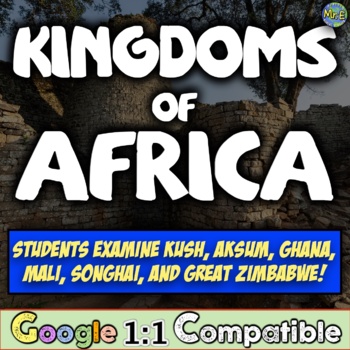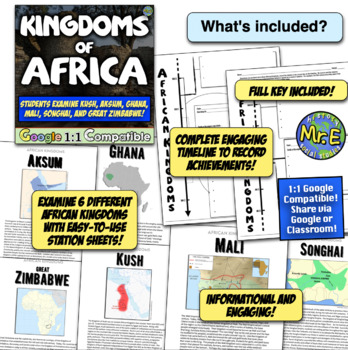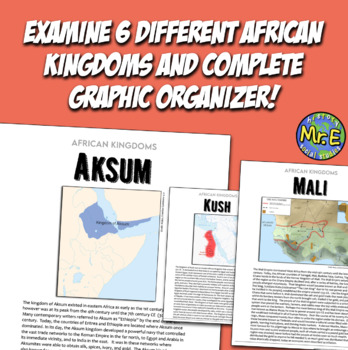African Kingdoms Stations Timeline Activity | Kush Ghana Mali Zimbabwe Aksum
- Zip
- Google Apps™

What educators are saying
Description
In this African Kingdoms stations and timeline activity, students learn the history, culture, rise, and fall of six of the most famous African Kingdoms, such as Kush, Aksum, Ghana, Mali, Songhai, and Great Zimbabwe. Students record details on each African Kingdom while they engage with a timeline assignment to understand each kingdom's place in history in relation to each other.
Students are introduced to a variety of cultural achievements from all over the continent of Africa, such as the Ge'ez language from the Aksum Empire, Beta Israel, the impact of the salt and gold trade on Ghana, Mali, and Songhai, the reign of Sundiata Kieta in Mali, Mansa Musa and his famous pilgrimage to Mecca, the rule of Sunni Ali and Askia Muhammed in the Songhai Empire, and the achievements and lost history of the people of Great Zimbabwe.
A teacher key and a full Google 1:1 version are included!





